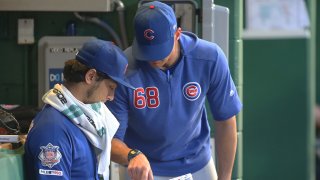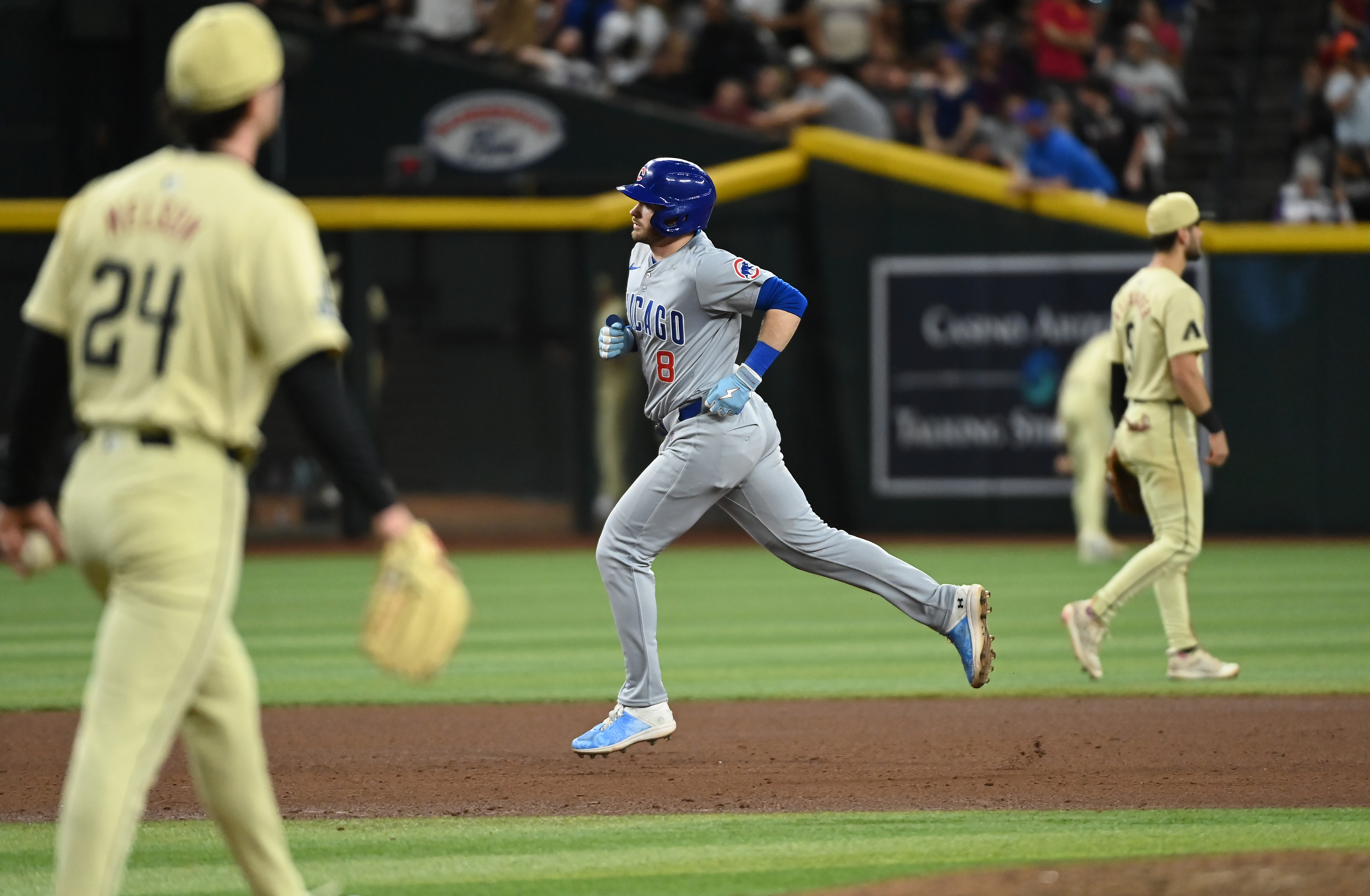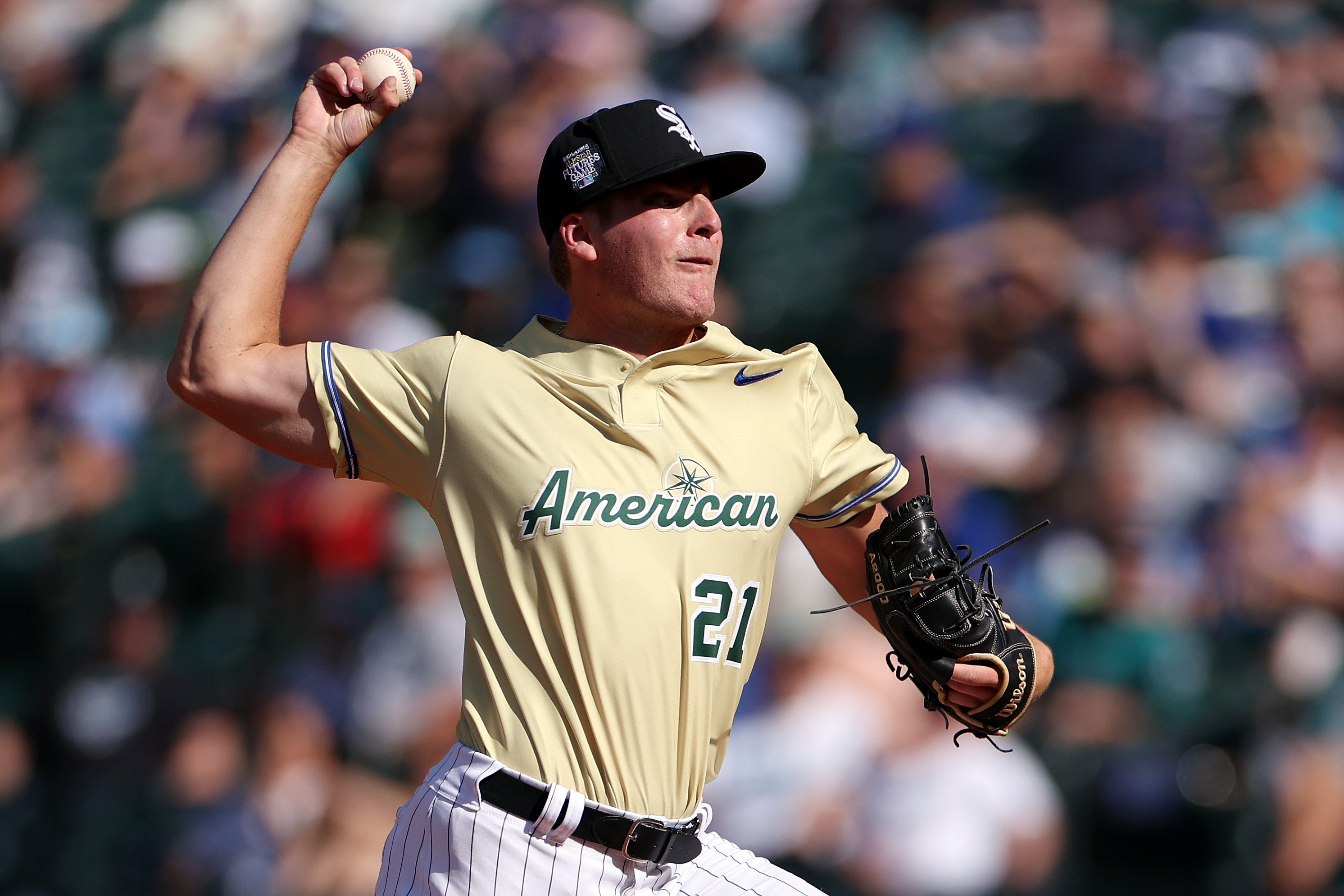
The Houston Astros electronic sign-stealing controversy has taken the baseball world by storm this offseason, culminating in an unprecedented punishment Monday that led to the firings of manager A.J. Hinch and GM/president Jeff Luhnow, a substantial fine and a huge loss of draft picks.
Alex Cora and the Boston Red Sox are next on the chopping block after the reports of their illegal sign-stealing ways during the 2018 championship run.
There's no doubt players, coaches and front office executives know the Astros and Red Sox weren't the only infractors of such sign-stealing techniques.
"Without talking about any one team, there are always a number of teams that there are rumors about or more than rumors," Cubs president of baseball operations Theo Epstein said at the GM Meetings in November. "It's just part of baseball. I'm sure some of them are based in fact and some are based in fiction."
So if the Cubs know other teams are out there trying to cheat using technology, how do they combat sign stealing in the new world?
The Cubs have gotten into the habit of constantly changing their signals, so even if opposing teams pick up on a certain set of signs, the Cubs simply switch it to something new and create another code for the other squad to try to break. Every Cubs player held a laminated card in their back pocket that would let them know what the new set of signs would be if someone felt the need to change signals at some point.
"We just basically created this system where it's an interchangeable set of signs — the catcher could change it at any time, the pitcher could change it at any time," Cubs pitching coach Tommy Hottovy said on the CubsTalk Podcast. "It could be simple — like first sign, last sign, whatever we need as sequences, but you can change them whenever you want. So the minute you think somebody has them, boom, you can immediately change to another set of signs.
MLB
"It really worked out well for our guys. There's always gonna be teams that are gonna be good at it and guys that are gonna be on second base that are notoriously good sign-stealers that you're gonna have to change it more often. But we kinda know who those guys are and we do a good job of watching them and watching their relays to the hitter at the plate.
"So we obviously have a lot of different eyes and ears around the field to make sure that we're covering our bases and not giving anything away that we shouldn't be."
That plan isn't foolproof — no system truly is — but it should be enough to keep the Cubs' opponents in the dark most of the time.
This almost assuredly won't be the end of these electronic sign-stealing stories, but Major League Baseball is doing all it can to set an example of the Astros to deter other teams from cheating in similar ways in 2020 or beyond.
But it's understandable if you're sitting to yourself wondering, why is this such a big deal? Baseball players have been trying to steal signs from the opposition since the dawn of the game.
Case in point: check out this excerpt from "Tales from the Tribe Dugout" that chronicled Bob Feller's high-powered telescope hidden in the center field scoreboard at Cleveland Municipal Stadium in 1948:
There is a huge difference between trying to pick up signs on second base or looking for a pitcher to tip his offering and using technological advancements to help gain an edge (like Feller's telescope or the Astros' entire system).
Technology or not, the Cubs start simple in attempting to keep their gameplan secret, ensuring pitchers aren't tipping pitches with their delivery — an issue that supposedly impacted Yu Darvish in the 2017 World Series when he faced the Astros (before the Houston sign-stealing scandal was brought to light).
Hottovy and the rest of the Cubs staff studies every aspect of a pitcher's delivery to ensure they're not giving anything away to the hitter like fiddling with the ball in their glove a certain way before throwing a curveball.
"There are a lot of factors that go into pitch-tipping and have gone into pitch-tipping for a hundred years in baseball," Hottovy said. "The difference now and why it's so widely publicized is people are using things electronically and illegally that make it that much more difficult to hide and really shouldn't be in the game. I absolutely get how things have been in the game and how pitch-tipping has been part of it — you can steal signs from second, all those things — but it needs to remain on the field, as it has been."
Click here to download the new MyTeams App by NBC Sports! Receive comprehensive coverage of the Chicago


